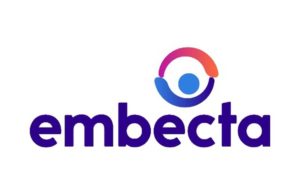 Embecta (Nasdaq:EMBC) announced today that it discontinued its insulin patch pump program and plans to initiate a restructuring plan.
Embecta (Nasdaq:EMBC) announced today that it discontinued its insulin patch pump program and plans to initiate a restructuring plan.
Shares of EMBC ticked up 4.3% to $14.41 apiece before hours after the company announced the discontinuation as part of its fourth-quarter earnings results.
The BD Diabetes spinoff won FDA approval for a disposable patch pump system in September. It had also long touted a closed-loop automated system under development. However, the company is now bowing out of that market, which features the leading Insulet Omnipod platform of pumps and also has expected entries from Medtronic and Tandem Diabetes Care in the future. PharmaSens also submitted a patch pump to the FDA last year.
Discontinuing the patch pump program comes not long after rumors of the company exploring a sale began circulating in July.
Embecta expects between $25 million and $30 million in pre-tax, cash charges for planned workforce reductions and other associated costs from the discontinuation of its patch pump program. The company did not disclose how many employees it expects this to impact and the state of New Jersey does not list any headcount reductions among its Worker Adjustment and Retraining Notification (WARN) Act notices at this time.
In total, Embecta expects between $35 million and $45 million in pre-tax charges in 2025 related to its restructuring plan. It anticipates completing the restructuring in the first half of 2025. Embecta projects annual cost savings of $60 million to $65 million from this restructuring.
“As our stand-up work nears completion and following an in-depth review of our portfolio and strategy, we have decided to discontinue our insulin patch pump program and initiate an organizational restructuring plan,” said Devdatt (Dev) Kurdikar, Embecta CEO. “We believe this approach will streamline operations, reduce costs and enhance our profitability and free cash flow profile. We intend to concentrate our resources on our core business and to prioritize our free cash flow towards paying down debt which we expect will give us the financial flexibility needed for future investments.”
A look at Embecta’s fourth-quarter results
Embecta reported profits of $14.6 million. That equals 25¢ per share on sales of $286.1 million for the three months ended Sept. 30, 2024.
Embecta more than doubled its bottom line year over year on a sales increase of 1.5%.
Adjusted to exclude one-time items, earnings per share came in at 45¢. That landed 9¢ ahead of expectations on Wall Street. Sales also topped the estimates as experts forecast $277 million in revenue.
“We are pleased to report a strong fourth quarter and end to our fiscal year, as we once again delivered results that exceeded our expectations across key financial metrics,” Kurdikar said. “We continued to execute on our strategic priorities, and to date, our significant accomplishments include the successful transition of approximately 98% of our revenue to our own ERP system, shared service capabilities, and distribution infrastructure, with India remaining as our only deferred market. Additionally, the recent launch of our small-pack GLP-1 needles in Germany has gone well, and we are evaluating expanding into other markets.”
Embecta expects 2025 adjusted EPS to range between $2.70 and $2.90. It anticipates revenues to come in between $1.093 billion and $1.11 billion.
The analysts’ view
BTIG analysts Marie Thibault and Sam Eiber called Embecta’s fourth-quarter performance “impressive” as it beat expectations. But, they were taken aback by the decision to cut off the insulin patch pump program.
“However, the biggest surprise came with the announcement that management is discontinuing the insulin patch pump program. This is something many investors we have spoken to over the past several quarters have wanted to see, as there was skepticism about the attractiveness of this market for [Embecta] and the level of spending needed to compete effectively.”
The analysts expect EMBC shares to continue rising today. They say the decisions should allow the company to focus on free cash flow generation and redirect investments. According to the analysts, those investments could help pay down debt and look for a more near-term return on investment.

